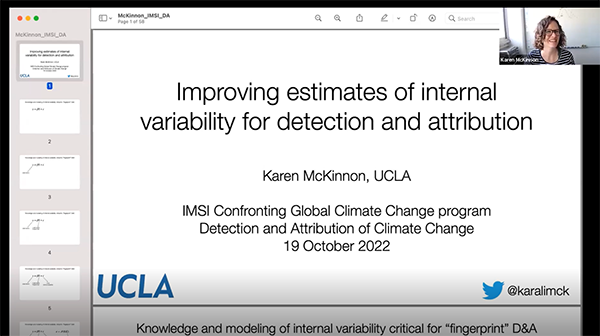Observationally-constrained internal variability for detection and attribution
Presenter
October 19, 2022
Abstract
The field of detection and attribution fundamentally poses a causal question: was a certain observed event or trend caused by human influence on the climate system? The two most common forms of D&A focus on either a "fingerprint" of climate change, or specific extreme events. While these two forms use fundamentally different methods, both typically rely on climate model simulations of both the signal (climate change) and the noise (internal variability). Thus, in theory it is critical to assess whether these properties are being properly simulated. In practice, however, this presents a challenge because it can be difficult to know either quantity from the observations. Here, we present a methodology to create "observational large ensembles" (Obs-LEs) that contain multiple realizations of internal variability comparable to climate model ensembles, but that are constrained by the observational record. The validity of the approach is assessed using the CESM1 Large Ensemble (CESM1-LE) as a testbed through determining whether a single member (analogous to the observations) can be used to reproduce the spread across the full ensemble. Focusing on winter precipitation in the continental United States, we demonstrate that the Obs-LE approach successfully reproduces important characteristics of variability in the CESM1-LE using only a single member, including the magnitude of very extreme events that could not be easily estimated using the observational record. Further, there are key differences in the spatial pattern and magnitude of internal variability between CESM1-LE and the "GPCC-synth-LE", an observational ensemble based on GPCC precipitation data. We suggest the observationally-based large ensembles should be incorporated in D&A frameworks as alternative estimates of internal variability.
